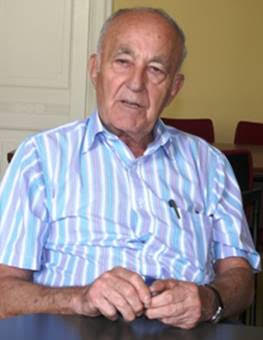
THE VOICE OF INTERNATIONAL LITHUANIA
|
VilNews has its own Google archive! Type a word in the above search box to find any article.
You can also follow us on Facebook. We have two different pages. Click to open and join.
|
Author Archive
- Posted by - (0) Comment

The capital city of Lithuania, Vilnius, has been named the best value city break destination in Europe by Hotels.com.
Best value city break in Europe? Old world Lithuania
The capital of Lithuania and largest Baroque town in Eastern and Central Europe, whose old world charm and picturesque streetscapes earned it a designation as a UNESCO World Heritage Site, has been named the best value European city break destination.
According to online reservation site Hotels.com’s annual Hotel Price Index report, budget travelers looking for a weekend or short getaway within Europe should consider the city of Vilnius, where the average hotel room comes in at £53 (€61).
While predominantly Baroque, the city is described as a “textbook of architectural styles” for also reflecting late Gothic and Classic domes, towers and castles that line the city’s crooked, narrow medieval streets.
Read more...
- Bookmark :
- Digg
- del.icio.us
- Stumbleupon
- Redit it
- Posted by - (0) Comment
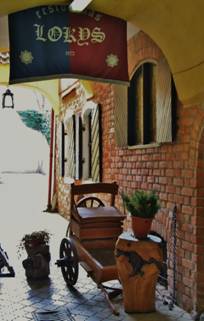
On weekends, Vilnius looks like a Belarusian city.
Cars with Belarusian registration plates, crowds of Belarusians carrying shopping bags, even bus schedules to Belarus from big shopping centres. In 2012, according to the Lithuanian State Department of Tourism, 400,000 Belarusian guests visited Lithuania.
In politics, Lithuania maintains a critical position against Lukashenka's regime. A significant number of offices of foreign foundations and organisations which work with Belarusian civil society are located in Vilnius.
Read more...
- Bookmark :
- Digg
- del.icio.us
- Stumbleupon
- Redit it
- Posted by - (0) Comment
Is Lithuania’s national bird getting lazy?
Many storks no longer
bother flying to Africa
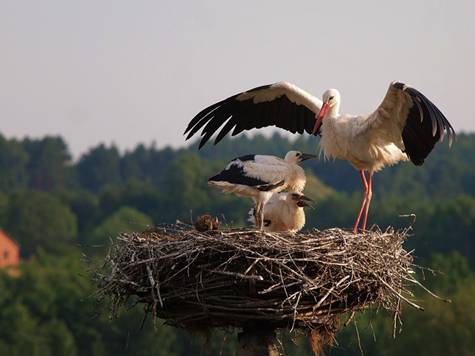
Lithuania has the highest density of white storks in the world,
considered the country’s national bird.
Photo: T. Marčiukaitis www.lietuva.lt
A new project will try to identify why the stork has changed migratory pattern. This writes Science Daily. The investigation has been launched by the University of East Anglia. Since the mid-1980s, a steadily increasing number of storks dropped their annual migration from northern Europe to their winter quarters in Africa.
Instead, both Portugal and Spain are now the final winter destinations for many storks, which feed on large open garbage dumps instead of crossing Sahara as they previously did.
The project will follow 15 adult storks in a year using GPS transmitters. The goal is to examine why they have changed their migratory behavior. GPS transmitters will reveal where storks forage for food and what movements they make between feeding areas.
Before 1995 there were only about 1000 wintering storks in Portugal whereas in 2008 there were over 10,000 wintering storks and the number continues to grow.
It is believed that a combination of climate change and the many open dumps that exist both in Portugal and Spain are among the factors why storks have dropped the long winter trip to Africa.
25 March is Lithuanian Stork Day! See: https://vilnews.com/?p=12622
- Bookmark :
- Digg
- del.icio.us
- Stumbleupon
- Redit it
- Posted by - (0) Comment
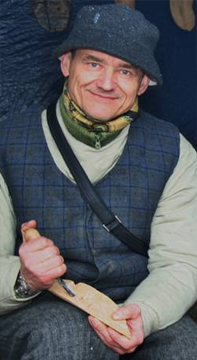
I met a smiling wood carver at this year’s Kaziuko Mugė
KAZIUKO MUGĖ PEOPLE

Aage Myhre I do not have too much interest in the commodities on KAZIUKO MUGE, but the people in front and behind the sale counters are phenomenally attractive ... People from town and country around all of Lithuania who spent day after day over the past year to do carpentry, sewing, forging iron art, making pottery ...
The Kaziuoko Muge people are sooo special... You simply have to love them all...

Ruta Musonis I agree. That's why I love viewing your photos.

Carol Luschas Great picture!

Aldona Onalfo Aage, you take beautiful pictures! Keep taking them!!! I enjoy seeing them.

Nellie Vin o so wonderful

Jenifer C. Dillis Great smile!

Elizabeth Hunt This guy looks like he is from Middle Earth by the way he is dressed.
- Bookmark :
- Digg
- del.icio.us
- Stumbleupon
- Redit it
- Posted by - (0) Comment

Number of Vilnius visitors increased by 14% in 2012
The Department of Statistics reports that in 2012 a total of 778,019 guests (679,380 in 2011) stayed in Vilnius accommodation establishments where they spent 1.538,580 nights (1.310,197 in 2011). The number of guests and nights increased by 14% and 12% respectively, Vilnius City Municipality's press office said.
A total of 82% (636,816) of all the guests who stayed in Vilnius hotels and guesthouses were foreigners, most of whom were from Russia – 43% more than in 2011 (84, 506). Belarus took the second place – 50% more than in 2011(75,412), guests from Poland were third – 8% less than in 2011 (71,544), guests from Germany were fourth – 11% more than in 2011 (57,527), and guests from Latvia took the fifth place – 6.5% more than in 2011 (30,789).
Indexes of rooms occupancy in Vilnius hotels have increased in 2012 and average rooms occupancy reached 59.1%, whereas during the same period in 2011, the indicator was 56.5%. Hotels were mostly accommodated in the period of June-September. The highest hotel room occupancy was in July as the rate accounted for 76.2%.
- Bookmark :
- Digg
- del.icio.us
- Stumbleupon
- Redit it
- Posted by - (0) Comment
KAZIUKO MUGĖ 2013
The wood carver
and the fish woman

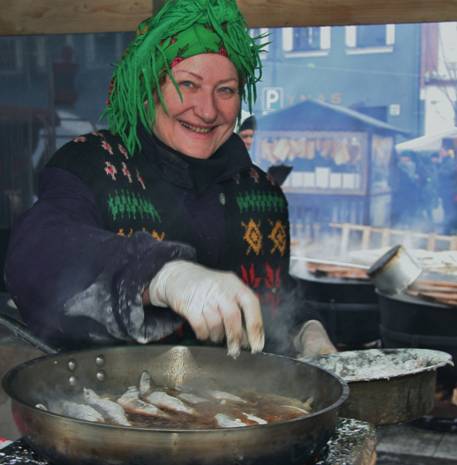
Photos: Aage Myhre
I met them at Kaziuko Mugė now this Sunday morning ... The wood carver and the woman who was there to fry fish for the thousands of visitors on the last day of this year's event ... The best outdoor market in the world, and a proud Lithuanian tradition for more than 400 years!
- Bookmark :
- Digg
- del.icio.us
- Stumbleupon
- Redit it
- Posted by - (0) Comment
 By Vin Karnila |
See my slide show: KAZIUKO MUGĖ 2013 from Vilnius, Lithuania CLICK: http://youtu.be/pamXdIGDm2A |
Every year in every town throughout Lithuania, March starts off with the Kaziukas Fair, a ritual that marks the coming of spring, dedicated to St. Casimir, the patron saint of Lithuania. The festival originated in the 17th century, and by the 19th century it had developed into the fair and festival that is now known internationally.
During more ancient times many pilgrims came to Vilnius from various places for the celebration of St. Casimir's Day on the 4th of March which was the day of his passing. After services in the cathedral, the people lingered for a while. And it was this that gave rise to the Kaziukas Fair. Thousands of sellers, buyers and visitors came to these fairs which were held outdoors as they still are today.
I hope you enjoy the slide show of this year’s Kaziuko Mugė I put together for VilNews.com E-Magazine
- Bookmark :
- Digg
- del.icio.us
- Stumbleupon
- Redit it
- Posted by - (0) Comment
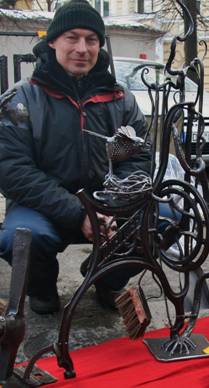
KAZIUKO MUGĖ 2013
https://vilnews.com/?p=12193

- Bookmark :
- Digg
- del.icio.us
- Stumbleupon
- Redit it
- Posted by - (0) Comment
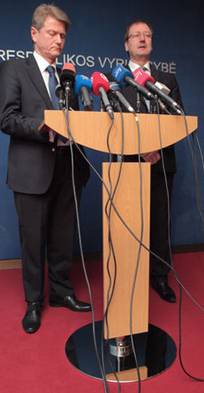
Viktor Uspaskich and Rolandas Paksas, leaders of the Labor Party and the Order and Justice party, believe that a merger of the two parties would produce the strongest center political force in Lithuania.
Photo: www.15min.lt
Lithuanian court rejects plea to stop Labor Party's merger with Order and Justice Party
Vilnius Regional Court on Friday rejected a request by prosecutor Saulius Verseckas of the Prosecutor General's Office to restrict activities of the Labor Party and stop its merger with the Order and Justice party.
The prosecutor says that in case of a merger, the Labor Party would cease to exist and would escape prosecution.
Meanwhile the court believes there will be no obstacles to the prosecution of the reorganized legal entity.
The ruling can be appealed in seven days. The prosecutor is yet to decide on whether to do so.
Read more...
- Bookmark :
- Digg
- del.icio.us
- Stumbleupon
- Redit it
- Posted by - (2) Comment
It’s again time for
KAZIUKO MUGĖ!
Friday 1 – Sunday 3 March
The world’s best outdoor market
– since the early 1700s!
|
Text and photos: Aage Myhre, Editor-in-Chief It is so genuine that you can hardly believe it without seeing it with your own eyes. Lithuania's Kaziukas Fair (KAZIUKO MUGE) is like an undiscovered, undisrupted island in the huge ocean of 'plastic commercialism' that unfortunately characterizes so much of our today's fairs, markets and festivals. Where else in the world can you find an outdoor market and festival that has been going on continuously through 300 years? What other nowadays' market is a declared plastic-free zone? Where else can you find a single market in which an entire nation's population still participates with enormous enthusiasm? In what other country can one experience what thousands of individuals from the countryside and the cities spend so much of their time through a whole year to produce of genuine artefacts - knitted, crocheted, sewed, carpentry - forged by a people who truly treasure their traditions in handicrafts and folk art? Every single year in every town throughout Lithuania, March starts off with the Kaziukas Fair, a ritual that marks the coming of spring, dedicated to St. Casimir, the patron saint of Lithuania. The festival originated in the 17th century, and by the 19th century it had developed into the fair and festival that is now known internationally. This year's fair takes place Friday 1st – Sunday 3rd of March and will be celebrated throughout the country, as well as in many Lithuanian strongholds around the world, for the complete weekend. But the most genuine ones are of course to find in the very homeland, so please do not wait to check with your travel agent, maybe there still are available tickets! Let’s meet for a mug of local beer and a fresh smoked snack from rural Lithuania!
As for what you can expect to see on the streets of Lithuania's cities this weekend, think first of all of arts and crafts. Craftsmen from all over Lithuania and neighbouring countries flood the streets with their original creations. Here you can buy woodwork, paintings, jewellery, pottery and pretty much everything else you can think of, both in traditional forms and contemporary designs. And what would a Kaziukas Fair be if there was no traditional food to try? Here you can sample a cup of beer or a good old Gira, a plate of porridge, a few pretzels, and if you're lucky you might even get a hold of the traditional potato dumplings, the cepelinai.
In this festival, tradition overpowers the cold and all events will take place outdoors. Before you baulk at the idea of spending time outside in this wintry weather though, consider this: Getting out into the streets in this chilly season, even for a couple of hours, can be a rewarding experience, and with so many nasty cold and flu viruses circulating through the indoor air, it may even be a salvation. And think of all those poor craftsmen, who spend three days from morning till night in the freezing weather, just so you can drop by and be entertained… The Kaziukas Fair is not only a place to sell. It's a place to find new contacts, build relationships with the Vilnius galleries and, of course, to have fun meeting all the craftsmen and exchanging ideas. So take some extra coin, jump into some warm clothes, and off you go to the Kaziukas Fair, be it the one in Vilnius Old Town, or in any other Lithuanian city. During more ancient times many pilgrims came to Vilnius from various Lithuanian places for the celebration of St. Casimir's Day on the 4th of March,. After services in the cathedral, the people lingered for a while. And it was this that gave rise to the Kaziukas Fair. Thousands of sellers, buyers and visitors came to these fairs. They were held outdoors. Another typical Kaziukas Fair product or muginukas, is a heart- shaped honey cookie, decorated with coloured sugar flowers, zigzags, dots and birds. People buy and give them to selected loved ones.
Let me say it again: Check with your travel agent, maybe there still are available airline tickets. We can help you with good hotel deals… |

- Bookmark :
- Digg
- del.icio.us
- Stumbleupon
- Redit it
- Posted by - (0) Comment
It’s again time for
KAZIUKO MUGĖ!
Friday 1 – Sunday 3 March
The world’s best outdoor market
– since the early 1700s!
Text and photos: Aage Myhre, Editor-in-Chief
aage.myhre@VilNews.com
It is so genuine that you can hardly believe it without seeing it with your own eyes. Lithuania's Kaziukas Fair (KAZIUKO MUGE) is like an undiscovered, undisrupted island in the huge ocean of 'plastic commercialism' that unfortunately characterizes so much of our today's fairs, markets and festivals.
Where else in the world can you find an outdoor market and festival that has been going on continuously through 300 years? What other nowadays' market is a declared plastic-free zone? Where else can you find a single market in which an entire nation's population still participates with enormous enthusiasm? In what other country can one experience what thousands of individuals from the countryside and the cities spend so much of their time through a whole year to produce of genuine artefacts - knitted, crocheted, sewed, carpentry - forged by a people who truly treasure their traditions in handicrafts and folk art?
Every single year in every town throughout Lithuania, March starts off with the Kaziukas Fair, a ritual that marks the coming of spring, dedicated to St. Casimir, the patron saint of Lithuania. The festival originated in the 17th century, and by the 19th century it had developed into the fair and festival that is now known internationally.
This year's fair takes place Friday 1nd – Sunday 3th of March and will be celebrated throughout the country, as well as in many Lithuanian strongholds around the world, for the complete weekend.
But the most genuine ones are of course to find in the very homeland, so please do not wait to check with your travel agent, maybe there still are available tickets!
Let’s meet for a mug of local beer and a fresh smoked snack from rural Lithuania!

The Kaziukas Fair is a declared plastic free zone.
- Bookmark :
- Digg
- del.icio.us
- Stumbleupon
- Redit it
- Posted by - (0) Comment
- Bookmark :
- Digg
- del.icio.us
- Stumbleupon
- Redit it
- Posted by - (1) Comment
SAINT CASIMIR
1458 – 1484
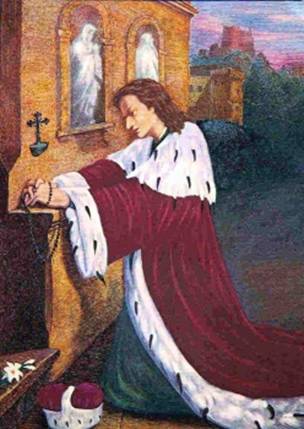
The young prince, Casimir
died at the age of 25 on the 4th of March 1484.
St. Casimir, Lithuania's only Saint, is celebrated on the 4th of March (his death day). This celebration is the origin of the nation's annual Kaziukas Fair.
After his death, St. Casimir was so cherished by Lithuanians that stories of his life and miracles quickly went beyond the church walls and spread through the population and became tales and legends, hence no wonder that he has been so much remembered and celebrated, since the 17th Century primarily through the Kaziukas Fair.
St. Casimir was a true Lithuanian by birth, descending from the famous and respected Gediminaitis clan. The Lithuanian grand dukes Kestutis, Algirdas, Vytautas the Great and others belonged to this family. St. Casimir's father was Kazimieras Jogailaitis who ruled Lithuania (later along with Poland) from 1447.
Kazimieras Jogailaitis married the daughter of Emperor Albrecht II, descended from the Habsburg family. They had six sons and six daughters. Casimir was the second son, born in 1458. He was renowned for a life of great piety, good works and virtue. Upon contracting tuberculosis, he died at the age of 25 on the 4th of March 1484 in the city of Gardinas. He was buried in Vilnius.
Shortly after his death, people started coming in large numbers to visit the holy prince's tomb and pray for intercession with God. His body was associated with numerous miracles and blessings from God. The process to canonize (declare a saint) St. Casimir was begun soon after his death, but for various reasons was delayed until 7 November 1602 when Pope Clement VIII officially proclaimed St. Casimir's feast on the church calendar. It was believed that Casimir had been canonized by Pope Leo X (before 1521) and that Clement VIII merely officially confirmed the fact.
People appealed to their saint at times of various misfortunes. His first miracle is considered to have been his apparition in 1518 at the Dauguva River during the war with Moscow. A large Russian army had assembled and threatened the city of Polotsk. A rather small force of Lithuanians stood to defend the city and fortress. The Lithuanians had to cross the swollen Dauguva River. Unable to find other help, they prayed to the saintly prince to intercede. St. Casimir is said to have appeared to the Lithuanians astride a white horse, wearing a white cloak. He urged the army to fight and rode first into the roaring river. The Lithuanians followed his example, fought fiercely and defeated Moscow's troops. The news of the prince's miraculous apparition and the victory spread throughout the country. The miracle was investigated by bishops of that time and confirmed as authentic. The very fact that St. Casimir came to help in a battle against Lithuania's eternal enemy Moscow elevated him even higher in the eyes of the Lithuanians. The saint became a symbol of the fight against the Russians and Russian Orthodoxy.
Such veneration, so closely linked to anti-Russian feelings, did not go unnoticed by Russia which often occupied Vilnius. Whenever the Russians approached the city, St. Casimir's relics were hidden and taken outside the city; after the danger had passed they were again returned to the church. The Russians made every effort to prevent St. Casimir's veneration; they banned his feast, but were unable to squash the people's enthusiasm. Thousands gathered annually on the 4th of March to pray at the tomb of their beloved saint.
The first church named after St. Casimir was built in Lithuania in the middle or the end of the 16th century near the town Ukmerge. It was built by the Jesuits. At approximately the same time, a church in the saint's honour was built in Vilnius. In Lithuania there are some twelve churches named for St. Casimir.
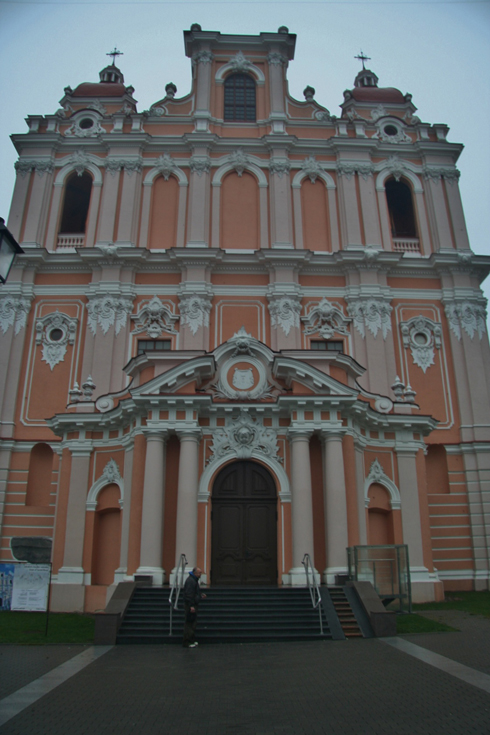
St. Casimir's Church in the centre of Vilnius is the oldest
Baroque church in Vilnius.
- Bookmark :
- Digg
- del.icio.us
- Stumbleupon
- Redit it
- Posted by - (0) Comment
SAINT CASIMIR
1458 – 1484

The young prince, Casimir
died at the age of 25 on the 4th of March 1484.
St. Casimir, Lithuania's only Saint, is celebrated on the 4th of March (his death day). This celebration is the origin of the nation's annual Kaziukas Fair.
After his death, St. Casimir was so cherished by Lithuanians that stories of his life and miracles quickly went beyond the church walls and spread through the population and became tales and legends, hence no wonder that he has been so much remembered and celebrated, since the 17th Century primarily through the Kaziukas Fair.
St. Casimir was a true Lithuanian by birth, descending from the famous and respected Gediminaitis clan. The Lithuanian grand dukes Kestutis, Algirdas, Vytautas the Great and others belonged to this family. St. Casimir's father was Kazimieras Jogailaitis who ruled Lithuania (later along with Poland) from 1447.
- Bookmark :
- Digg
- del.icio.us
- Stumbleupon
- Redit it
Some pictures from Kaziuko Mugė 2012
- Posted by - (0) Comment
- Bookmark :
- Digg
- del.icio.us
- Stumbleupon
- Redit it
- Posted by - (0) Comment

“Zuokas Airline”
to take off in June
Air Lituanica, the brain child of Vilnius' mayor Arturas Zuokas whose idea is to launch a new national air carrier is taxiing for take-off, writes news2biz LITHUANIA in its latest report.
In June the airline should complete lease of its two mid-range aircraft (reportedly, Embraer 175). Eventually, the airline plans to have five 70-80-seat aircraft in 2015.
At least in the beginning, the would-be airline will truly be a national one, paid for by tax-payer money in the form of Vilnius municipality owning 83%.
Read more…
- Bookmark :
- Digg
- del.icio.us
- Stumbleupon
- Redit it
VilNews e-magazine is published in Vilnius, Lithuania. Editor-in-Chief: Mr. Aage Myhre. Inquires to the editors: editor@VilNews.com.
Code of Ethics: See Section 2 – about VilNews. VilNews is not responsible for content on external links/web pages.
HOW TO ADVERTISE IN VILNEWS.
All content is copyrighted © 2011. UAB ‘VilNews’.

 Click on the buttons to open and read each of VilNews' 18 sub-sections
Click on the buttons to open and read each of VilNews' 18 sub-sections 











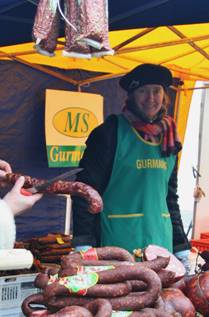
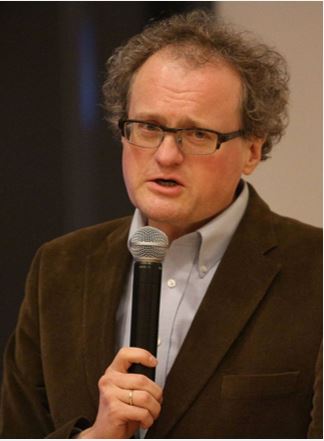

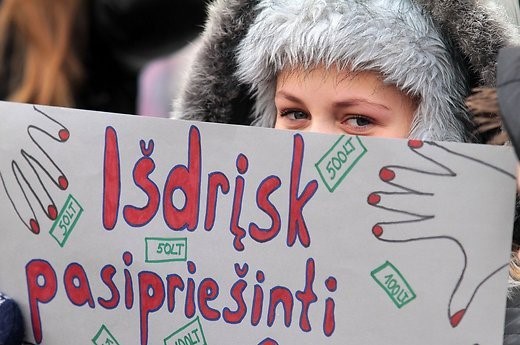


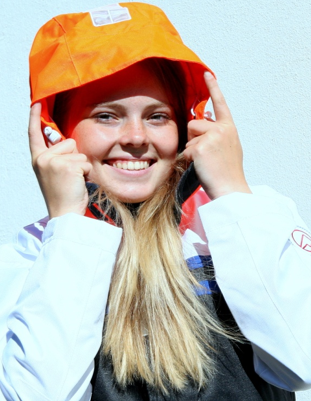


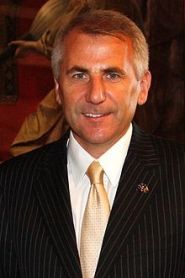
.jpg)
